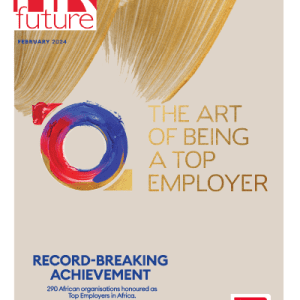HR pros are perpetually expected to keep the many plates of financial reporting spinning merrily, even if this task can seem disheartening in its scale.
Luckily the right tech is more than capable of streamlining almost every task of this type – it’s just a case of knowing which tools to use, and how to harness them effectively.
If you’re in the dark on both these issues, hold onto your hat as we take a rapid ride through the solutions and strategies that will work best for you in 2024.
Unleashing Automation on Data Extraction
The age-old chore of data extraction no longer requires hours hunched over spreadsheets. Today, automation tools not only simplify this task but also enhance accuracy and efficiency. And of course automating the extraction process means HR departments can reallocate their time to more strategic efforts. Here are some of the technologies at play, and their benefits:
Automated Data Tools
Software solutions empowered by OCR (Optical Character Recognition) and AI-based data extractors can automatically pull vital information from various documents, reducing manual entry errors.
Given that an estimated $6.1 billion is lost each year to financial reporting missteps, it’s an obvious priority to address this, and one whose cost can easily be justified by the potential savings it represents.
Seamless Integration
Many extraction tools integrate smoothly with accounting software, ensuring that data flows directly into financial reports without requiring additional handling or verification steps.
For instance, you can use a tool to convert PDF to QBO (QuickBooks Online format), which allows those managing finances to import transactional data directly into QuickBooks. This means no more laborious manual entries – just a quick upload and the software takes care of placing each piece of data where it belongs.
Scheduled Extractions
You can set up these tools to operate on a schedule that suits your reporting cycle – be it daily, weekly or monthly. This ensures your financial data is always current and ready for analysis when needed.
So in short, the transition from manual methods to automated processes marks a significant leap towards operational excellence in financial reporting.
Harnessing the Power of Software Integrations
Efficient software integrations are a necessity for HR departments that aim to enhance their financial reporting processes. These integrations allow disparate systems to communicate seamlessly, providing a unified view of financial data and facilitating more informed decision-making. Here’s what this looks like:
Centralized Data Hub
Integration platforms can consolidate data from various sources into a single repository. This centralization simplifies access and analysis, making it easier to generate comprehensive reports.
Real-Time Updates
By linking HR management systems with financial accounting software, any change in payroll or employee benefits is immediately reflected in the financial records. This real-time update capability ensures that reports are always based on the most current data.
To illustrate, consider an HR department that integrates its payroll system with an ERP (Enterprise Resource Planning) platform. When an employee’s salary changes or when bonus payments are processed, these updates automatically sync between both systems without manual intervention.
This not only saves time but also eliminates the risk of discrepancies between payroll expenditures and financial statements.
Automated Compliance Checks
Integrated systems can be programmed to automatically verify compliance with financial regulations and standards as data is processed. This proactive approach helps avoid potential fines and penalties associated with non-compliance, and even contributes to the financial stability of the entire company.
Choosing Tools Strategically
As well as aiming for as much automation as possible, it’s also crucial to pick platforms that align perfectly with your organization’s specific needs and existing systems. Each tool comes with its unique strengths, so understanding these can significantly influence your efficiency and compliance.
Here are some considerations to factor into this process:
Cloud-Based Solutions
Platforms like Xero and QuickBooks Online offer robust financial reporting features that are accessible remotely. These tools are particularly beneficial for organizations with remote or hybrid work models because access to financial reports is not limited by location. This means that capitalizing on the $11,000 per-employee saving that’s possible with remote working is easier to justify.
ERP Integrations
For larger enterprises, integrating an ERP system like SAP or Oracle can dramatically streamline finance processes. These systems consolidate all HR and financial data into a single framework, which simplifies analysis and enhances report accuracy.
For example, using Workday as an HR platform directly integrated with an ERP system ensures that updates in employee details are instantaneously mirrored in the financial modules. This integration facilitates seamless synchronization of payroll processing and general ledger entries.
Specialized Compliance Tools
You could utilize platforms such as Thomson Reuters ONESOURCE or Avalara, which specialize in automating compliance related tasks by keeping track of changing tax laws and regulations across different jurisdictions.
Given that tax compliance costs an estimated $260 billion annually, equivalent to 6.5 billion hours of working time, even small improvements here can lead to significant advantages in terms of budget and resource allocation for HR teams.
Ensuring Accuracy in Every Report
In financial reporting, accuracy is the name of the game, so aiming for complete precision while maintaining compliance with changeable financial regulations requires strategic use of technological tools that are designed for these challenges. Leveraging cutting-edge technological tools, HR departments have the potential to improve their financial reporting throughput vastly.
For example, resource-light solutions such as a powerful JavaScript spreadsheet library offer massive advantages in managing and processing financial data in real-time with precision matching that of the most trusted commercial platforms. Integrated systems with robust features can significantly alleviate the burden on HR professionals by automating complex calculations and maintaining accurate finance records.
Here are a few more options to weigh up:
Advanced Analytics Tools
Platforms like Tableau or Microsoft Power BI can be used to burrow into vast volumes of financial data and uncover insights that might be missed through traditional analysis methods.
These tools help identify anomalies or inconsistencies that could indicate errors or potential compliance issues before they become problematic. Given that non-compliance incidents have cost some companies upwards of $35 million, preventive measures are clearly worth pursuing.
Document Management Systems
Implementing a system like DocuWare or M-Files can help organize financial documents meticulously. This organization is crucial for audit trails, ensuring every transaction is accounted for and easily retrievable in the face of audits or compliance reviews.
For instance, let’s say you’re part of an HR department facing sudden scrutiny regarding employee reimbursements.
A tool like DocuWare would allow you to quickly pull up all relevant expense documents, showing clear trails from initial submission to final approval, thus proving your adherence to internal controls and external regulations.
Automated Alerts
Configuring alerts within your financial systems (such as SAP Risk and Assurance Management) can be a game-changer. These alerts notify you when discrepancies arise or when thresholds are breached, allowing immediate action to correct and comply.
Streamlining through Customization
Every organization has its own set of challenges and requirements, especially when it comes to financial reporting. Customizing tools to meet these specific needs not only enhances efficiency but also improves the quality of the reports generated. Here’s what to look out for:
Custom Reporting Features
Platforms like Salesforce and Zoho offer customizable reporting modules that can be tailored to fit the specific metrics relevant to your business. Adjusting these tools can provide deeper insights into financial data, highlighting trends and opportunities that are unique to your sector.
API Integrations
Many modern software options offer extensive API support, allowing them to integrate seamlessly with other tools. For example, integrating HRMS data with a custom-developed dashboard on Tableau allows for real-time monitoring of payroll costs against budget forecasts.
So for instance, let’s imagine you’re part of an e-commerce company that uses Shopify for your online transactions. By integrating Shopify with your financial software using APIs from a tool like Zapier, you can automate the data flow into your accounting ledger in real-time, ensuring accurate financial tracking without having to do any of this by hand.
Bespoke Automation Solutions
Look into services like UiPath or Blue Prism for robotic process automation (RPA) which can be programmed to handle repetitive tasks based on the unique rules and processes of your department.
The power of RPA is made clear in a Deloitte survey, which found that 53% of organizations are already embracing this strategy, and improved compliance, accuracy and productivity were cited as benefits by 92%, 90% and 86% of respondents in this group respectively.
Final Thoughts
We’ve shown that the integration of advanced technological tools into financial reporting processes is a strategic necessity for modern HR departments. You should:
- Embrace Automation to streamline data extraction and reduce manual errors.
- Integrate software successfully by choosing platforms that communicate seamlessly for real-time updates and centralized data management.
- Prioritize accuracy by employing tools that can ensure precision and compliance.
- Customize solutions to address specific organizational needs.
With these strategies, you’re leveraging technology to elevate your financial reporting to new heights of efficiency and reliability.
Guest writer.









